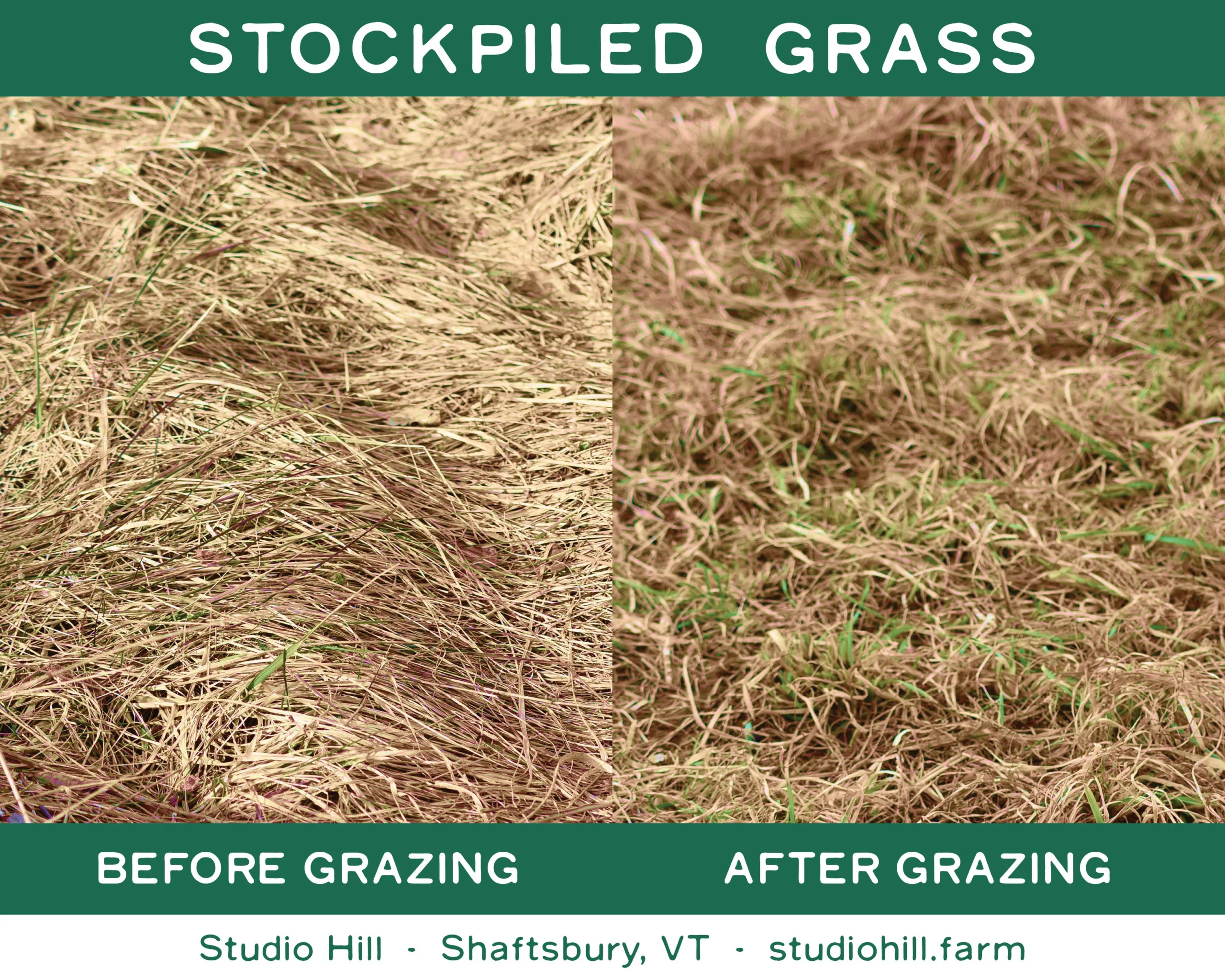Last season, the sheep grazed our South Meadow in mid June, and instead of mowing and baling the second growth in August or September, we let that grass stand and go into winter.
About two weeks ago, we brought the sheep out of their winter paddocks and started them back on their grazing rotation in the South Meadow. There was no hint of green growth yet—the snow had just melted and the grasses were all brown and dormant looking. But the sheep were eager to leave their winter digs and start foraging, and they happily dove into their work.
This before and after image shows the dense, stockpiled grass ahead of grazing, and the cleared grass afterward. The thick cover of the stockpile protected the soil and root system all winter, and then the sheep cleared, trampled, and fertilized it, perfectly preparing the field for the new season’s growth.
The stockpiled grass also makes for a smooth transition from their winter hay. Instead of jumping right from round bales to the intensely nutrient-dense spring grass, the stockpiled grass is a bridge between the two, and gives their systems a chance to settle in to the diet change.
One of the most satisfying things about the way we farm is getting to learn and experiment with new techniques, and to see how quickly even simple changes make an impact on the land and animals. In the long run, we love the idea of balancing minimal hay production with maximum grass stockpiling. Not every new approach we try works the way we hope, but we learn something important about our farm ecosystem every time.






